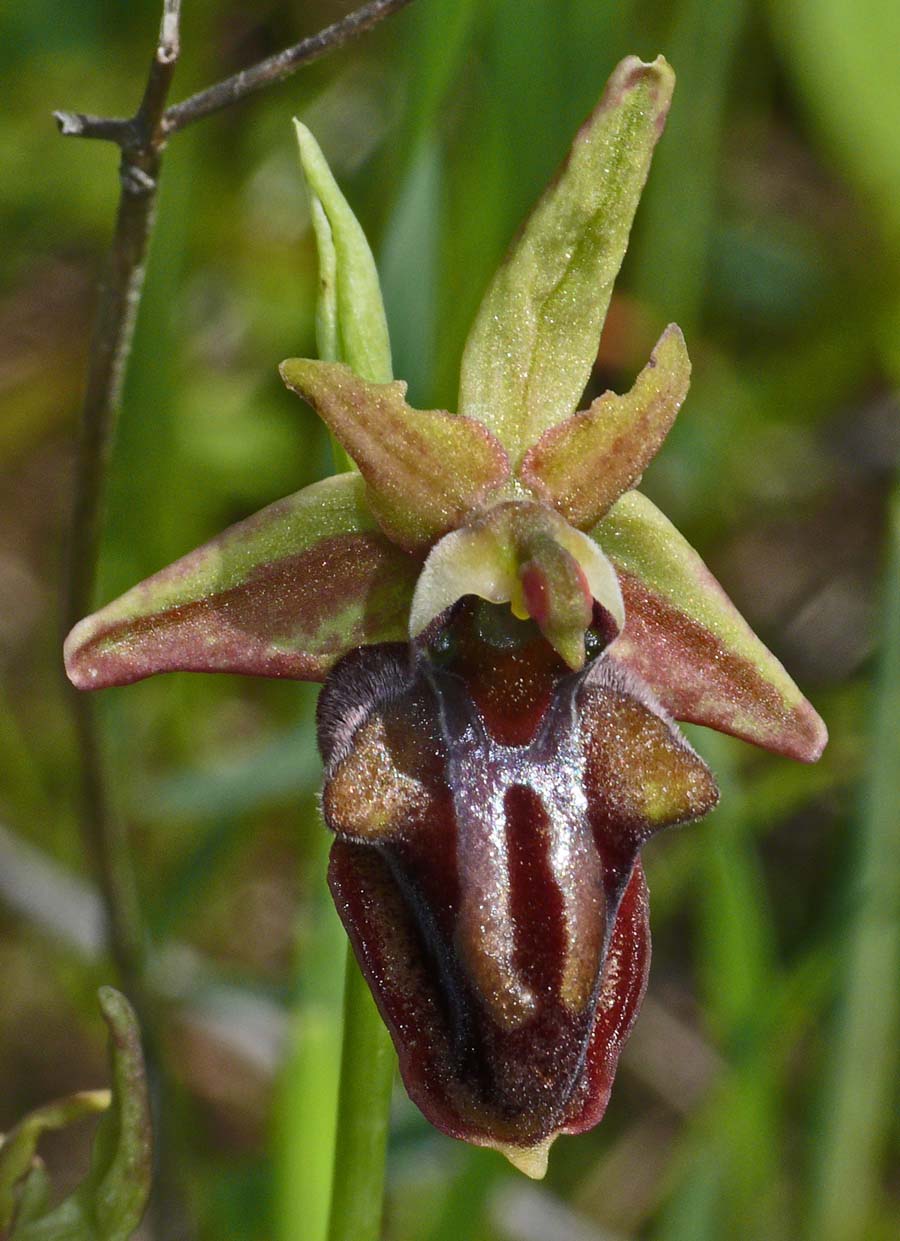O. herae was first described from the Greek island of Samos by Hirth and Spaeth in 1992 and is named after Hera, the Goddess of women and marriage.
This is an uncommon member of the large O. mammosa group and is a taxon that has been the subject of considerable recent study. It was originally thought to occur widely in continental Greece, the Aegean basin, Crete and Cyprus but its range was not known with certainty due to the species similarity with other Hellenic Ophrys and not least O. mammosa itself. Paulus and Hirth concluded that O. herae only existed in its type form on Samos where it is reasonably widespread in the west of the island, particularly in abandoned areas around the town of Paleokastro. Species from outside Samos are now regarded as closely related but evolutionary offshoots from type, albeit still sharing the same pollinator. In Turkey they have been given varietal status as O. herae var. osmandica and the population once thought to exist in Cyprus is now regarded as misidentified members of the various other O. mammosa group representatives on the island.
On Samos it can be fairly reliably differentiated by means of the stigmatic cavity which is invariably rusty/orange whereas in the only other similar Ophrys on the island, O. mammosa, it's black. The flowers are small and the plant itself is tall and spindly. The lip is normally a dark red which contrasts with the lighter coloured, often orange stigmatic cavity and basal field. Basal swellings are prominent and hairless on the inner face. The pictures are from Samos, dating from the first week of April at which time the plants were declining.











